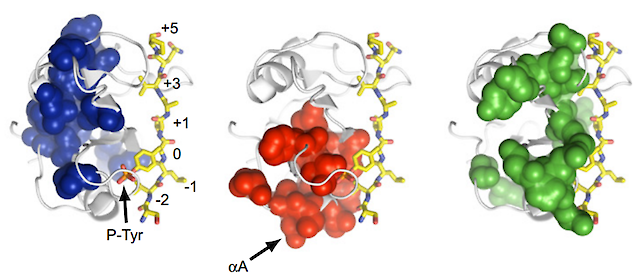Protein sectors
Cell 2009

Proteins are traditionally described by their primary, secondary, and tertiary structural properties, a decomposition into units that forms our language for discussing protein function. Thus, we speak of individual amino acid residues, alpha helices, beta-strand, and loops, or tertiary structure motifs comprised of these elements. In. this work, we show that the natural decomposition of protein structure by the pattern of evolutionary correlations between amino acid residues does not follow any of these structure-based classifications. Instead, the evolutionary units are one or more sparse networks of amino acids (termed “sectors”) that arise from various regions of primary structure and various portions of secondary structure elements, and sharing only the structural principle that they are physically contiguous in the tertiary (or quaternary) structure. We show that individual proteins can have multiple, independent sectors, with each sector corresponding to a distinct biochemical activity and corresponding to a distinct mode of functional divergence(s) in a protein family. We propose that sectors represent a new decomposition of protein structure that corresponds to function.